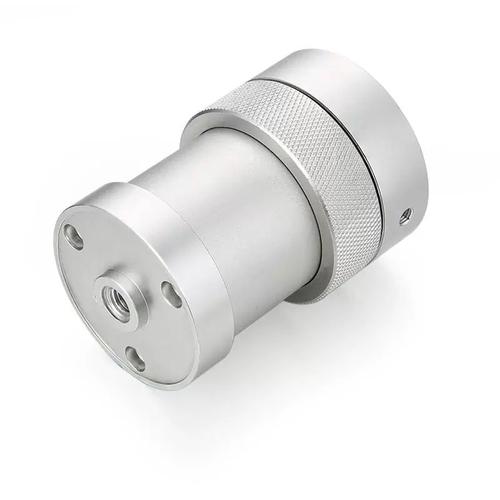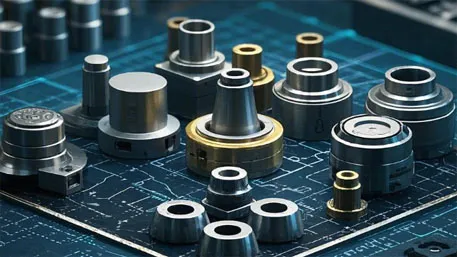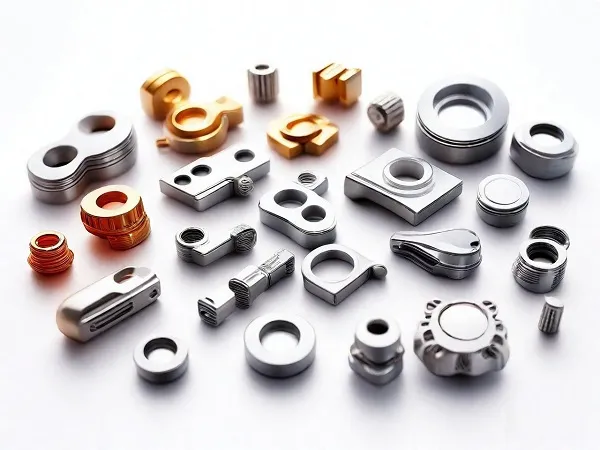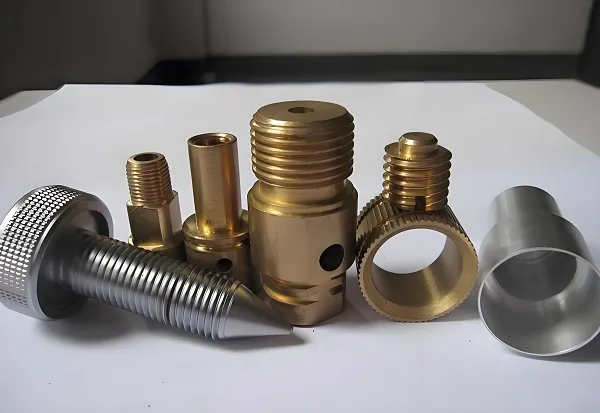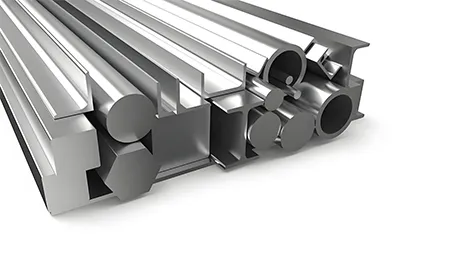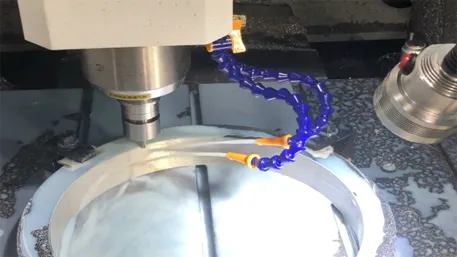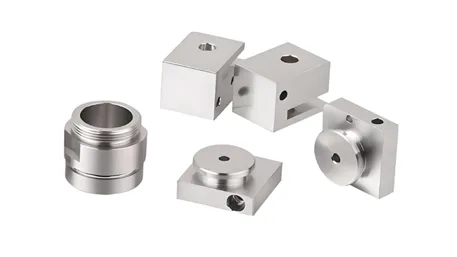Answer
CNC aluminum alloy parts are components manufactured from aluminum alloys through Computer Numerical Control (CNC) machining technology. Aluminum alloys are widely used in CNC machining due to their light weight, high strength, corrosion resistance, good thermal conductivity, and excellent machinability. CNC machining involves programming machine tools (such as milling machines, lathes, and machining centers) to precisely cut, drill, and mill aluminum alloy blanks, enabling the production of parts with complex geometries, high precision (tolerances up to ±0.01mm), and smooth surfaces (roughness Ra≤1.6μm). These parts are widely applied in aerospace (e.g., fuselage frames, engine components), automotive industry (e.g., wheel hubs, housings), electronic devices (e.g., heat sinks, casings), medical equipment, and automation systems, meeting requirements for lightweight design, high strength, and weather resistance.
Extended Answer
I. Definition and Core Elements of CNC Aluminum Alloy Parts
-
Basic Concept
CNC aluminum alloy parts are precision components made from aluminum alloys through automated machining on CNC machines. CNC technology uses G-code or M-code programming to achieve 3-axis to 5-axis simultaneous machining, ensuring dimensional accuracy and surface quality. Aluminum alloys (such as 6061, 7075, 5052, etc.) contain elements like aluminum, magnesium, silicon, and copper, with distinct properties that dictate material selection for specific applications. -
Technical Core
- Material Characteristics: Aluminum alloys have a density of ~2.7g/cm³ (1/3 that of steel) and balance strength with toughness (e.g., 7075-T6 aluminum alloy has a tensile strength of 572MPa), making them ideal for lightweight designs.
- Machining Precision: CNC machines offer positioning accuracy of ±0.005mm and repeatability of ±0.003mm, meeting the strict requirements of aerospace and other high-precision fields.
II. Classification and Application Scenarios of Aluminum Alloys
| Alloy Series | Typical Grades | Major Elements | Performance Characteristics | Typical Applications |
|---|---|---|---|---|
| 6000 Series | 6061, 6063 | Al, Mg, Si | Medium strength, good corrosion resistance, and weldability | Automotive parts, electronic casings, construction profiles |
| 7000 Series | 7075, 7050 | Al, Zn, Mg | High strength (aerospace-grade), fatigue resistance | Aircraft structures, high-end sports equipment |
| 5000 Series | 5052, 5083 | Al, Mg | Marine corrosion resistance, good plasticity | Marine components, pressure vessels |
| 2000 Series | 2024 | Al, Cu | High strength, heat resistance | Aero-engine parts, molds |
III. Process Advantages and Challenges of CNC Machining Aluminum Alloys
-
Technical Advantages
- High-Efficiency Mass Production: CNC machines can operate 24/7 with automated loading/unloading, reducing cycle time to 1/5 that of traditional machining.
- Complex Structure Machining: 5-axis CNC machines complete complex features (e.g., hollow structures in UAV frames) in a single setup.
- Surface Treatment Compatibility: Post-machining treatments like anodizing (improves wear resistance), electroplating (decorative), and electroless nickel plating (corrosion protection) further optimize performance.
-
Faced Challenges
- Thermal Deformation Control: Aluminum alloys have high thermal conductivity (~205W/m·K), prone to built-up edge during cutting. Water-soluble cutting fluids (40% improved cooling) or diamond-coated tools (3x extended life) are essential.
- Tool Wear: High-silicon aluminum alloys (e.g., ADC12) cause severe tool wear, requiring ceramic or CBN (cubic boron nitride) tools.
IV. Machining Process and Key Technologies for CNC Aluminum Alloy Parts
-
Complete Process Flow
- Design and Programming: Model with SolidWorks/UG, generate CAM programs, and set cutting parameters (e.g., 6061 aluminum milling: spindle speed 10,000–15,000rpm, feed rate 0.1–0.3mm/rev).
- Material Preprocessing: Billets undergo aging treatment (e.g., T6 heat treatment to enhance strength) to eliminate internal stress.
- Machining Execution: Rough machining removes 80% of material with 0.5–1mm allowance; finishing uses small cutting amounts (depth ≤0.2mm) for precision.
- Post-Processing: Deburring (electro-polishing or vibratory finishing), dimensional inspection (CMM), and surface treatment.
-
Key Process Technologies
- Thin-Walled Part Machining: Adopt “layered cutting + fixturing” solutions, such as vacuum adsorption fixtures for mobile phone middle frames to reduce vibration-induced deformation.
- Deep Hole Machining: For holes ≤3mm in diameter with L/D >10, use gun drills with high-pressure cutting fluid for chip evacuation.
V. Industry Applications and Typical Cases
-
Aerospace Field
- Application: The fuselage frame of Airbus A350 uses 7075-T6 aluminum CNC parts, reducing weight by 40% compared to steel components and doubling fatigue life.
- Technical Points: Require CT scanning for internal defect detection and hard anodizing (film thickness ≥25μm) to resist high-altitude corrosion.
-
New Energy Automotive Field
- Case: The battery casing of Tesla Model 3 is machined from 6061-T6 aluminum, featuring a multi-cavity design with 500MPa compressive strength, meeting lightweight requirements (<25kg) and IP67 waterproofing.
-
Consumer Electronics Field
- Trend: The Apple MacBook Pro casing uses 7075 aluminum milled by 5-axis CNC, achieving a thickness of 1.6cm through “pocketing for weight reduction.” Anodizing forms micro-porous structures to enhance grip and wear resistance.
VI. Quality Control and Testing Standards
- Dimensional Accuracy Inspection
- Use Coordinate Measuring Machines (CMM) to check critical dimensions, such as hole spacing within ±0.02mm and flatness ≤0.05mm/m.
- Surface Quality Inspection
- Measure Ra value with a roughness tester (typically Ra≤0.8μm for electronic casings); visual inspection for no tool marks or burrs.
- Mechanical Property Testing
- Tensile tests (yield strength, elongation), hardness tests (HB or HV); aerospace parts require additional fatigue testing (≥10⁷ cycles).
VII. Future Development Trends
-
Process Innovation
- High-Speed Machining (HSM): Spindle speeds up to 40,000rpm with 5-axis 联动 enable “second-level forming” of aluminum parts, such as precision gears for minimally invasive surgical instruments.
- Green Machining: Adopt dry cutting (liquid nitrogen cooling) or minimum quantity lubrication (MQL) to reduce coolant pollution and energy consumption by 30%.
-
Material Upgrades
- Develop new aluminum alloys (e.g., Al-Li alloys) with density reduced to 2.4g/cm³ and strength increased by 15%, suitable for extreme scenarios like satellite components.
-
Intelligent Integration
- Use IoT technology to monitor CNC machine parameters (cutting force, temperature) in real-time, predict tool wear, and optimize processes (e.g., FANUC’s AI spindle load control technology).
Conclusion
CNC aluminum alloy parts serve as core components in high-end manufacturing, leveraging material performance and processing technology. From aerospace to consumer electronics, their applications continue to expand. Process innovations (e.g., HSM, intelligent inspection) and material advancements (e.g., lightweight alloys) will drive the field toward higher precision, efficiency, and sustainability. Understanding their technical characteristics and application logic is crucial for manufacturing engineers to optimize product design and control production costs.

